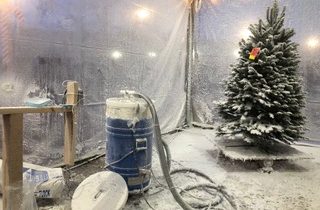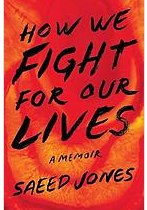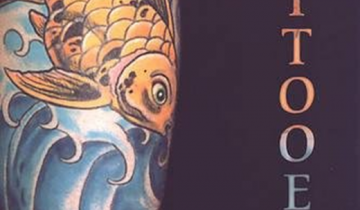Off the Shelf #4: Out of These Worlds : LGBT Beings and Science Fiction/Fantasy
by Robert Ridinger
The worlds of science fiction and fantasy writing have become a common cultural presence across the planet thanks to the interwoven websites, blogs, and full-text online resources of the Internet. The tales woven by the authors of these genres are frequently set in societies where contemporary definitions of gender and limitations of law (both human and natural) do not obtain, allowing explorations of alternative possibilities. This makes these realms of writing a natural home for LGBT people and their hopes, problems and dreams, a quality reflected in reference literature in a limited fashion since Stonewall.
The first reference work to focus specifically on LGBT people in fantasy and science fiction was the annotated bibliography compiled in 1983 by writer Eric Garber and activist Lyn Paleo, at that time both members of the San Francisco Gay and Lesbian History Project. Uranian Worlds contains detailed profiles of 568 novels and stories and features two introductions by established authors Samuel R. Delany and Joanna Russ which deserve close attention (prior to the appearance of Uranian Worlds, both Russ and Delany had been interviewed in The ADVOCATE in 1981 and 1982 respectively, Delany by Pat Cailifia and Russ by Camilla DeCarnin). Delany began by recounting his experience on a panel during the thirty-eighth annual World Science Fiction Convention (Noreascon 2), August 29-September 1, 1980 at the Boston Sheraton Hotel, which bore the title “The Closed Open Mind- Homophobia in Science Fiction and Fantasy Stories,” the first such panel ever held at a World SF convention. This panel discussion was conducted by Delany and four other writers, who spoke to over two hundred people. His introduction provides a thoughtful challenge to the reading (and library) public to “read with an awareness of the breadth and range of what has been written” (Delany, p. xix) when looking at the portrayal of gay men and lesbians in science (or any) fiction. Feminist SF author Joanna Russ’ dryly incisive introduction places the portrayal of lesbians in SF within the more familiar discussion of the general absence of lesbians in literature (or their historic invisibilities and stereotypical portrayals when present) and observes that “tracing the sudden visibility of lesbian and gay male characters in sf is a historical detective story” (Russ, p.xxiii ).
It is interesting to note that the only items in the list of references consulted in building Uranian Worlds directly addressing LGBT identity are The Male Homosexual in Literature: A Bibliography by Ian Young, issued by Scarecrow Press in 1975, and the third edition of The lesbian in literature; A Bibliography by Barbara Grier, published in 1981 by Naiad Press in Tallahassee, Florida. An expanded second edition of Uranian Worlds was issued in 1990 adding the genre of horror writing to the volume.
 Three years later, Garber and Paleo, working with Camilla Decarnin, edited Worlds apart: an anthology of lesbian and gay science fiction and fantasy produced by Alyson Publications in Boston. This remains one of the groundbreaking anthologies in print form of this genre. The eleven stories (originally published between 1970 and 1982) represent many of the writers who have come to be recognized as significant contributors to the corpus of twentieth-century SF- Marion Zimmer Bradley, James Tiptree, Elizabeth Lynn, Jewelle Gomez, John Varley, as well as Samuel Delany and Joanna Russ. The 1980s are also notable for the Delany’s personal account, The motion of light in water, which recounts his life as a gay man and his creative growth in New York City’s East Village over an eight-year period (the book was reissued by the University of Minnesota Press in 2004).
Three years later, Garber and Paleo, working with Camilla Decarnin, edited Worlds apart: an anthology of lesbian and gay science fiction and fantasy produced by Alyson Publications in Boston. This remains one of the groundbreaking anthologies in print form of this genre. The eleven stories (originally published between 1970 and 1982) represent many of the writers who have come to be recognized as significant contributors to the corpus of twentieth-century SF- Marion Zimmer Bradley, James Tiptree, Elizabeth Lynn, Jewelle Gomez, John Varley, as well as Samuel Delany and Joanna Russ. The 1980s are also notable for the Delany’s personal account, The motion of light in water, which recounts his life as a gay man and his creative growth in New York City’s East Village over an eight-year period (the book was reissued by the University of Minnesota Press in 2004).
The 1990s witnessed both the explosion of the Internet as a venue for all things fantasy and science fiction, as well as the appearance of articles on the LGBT aspect of this genre in the emerging reference literature of LGBT studies. Stephen Donaldson’s 1990 essay in the Encyclopedia of Homosexuality on “Science Fiction” was shortly followed by Eric Garber in the topical volume Homosexual Themes in Literature with a piece discussing “The Best of Gay Sci-Fi and Fantasy.” The 1995 reference work The Gay and Lesbian Literary Heritage edited by Claude J. Summers features an essay by Joseph Marchesani on “Science Fiction and Fantasy” which would later be picked up and included in the online encyclopedia gltbq.
The twenty-first century has witnessed the continuation of entries on science fiction in LGBT reference works as well as the development of a body of writing on LGBT themes within the critical literature of science fiction as genre. Notable in this latter category is Camille Bacon-Smith’s 2000 study Science Fiction Culture, which devotes an entire chapter to the “Gay and Lesbian Presence in Science Fiction,” a valuable discussion of the history of the presence and acceptance of LGBT people in the science fiction fandom community. Five years later, The Greenwood Encyclopedia of Science Fiction and Fantasy: Themes, Works and Wonders offered a brief article on “Homosexuality ,” a curious use of a term that was beginning to be superseded by a variety of alphabetic sequences based on LGBT. But the most lengthy and detailed treatment of both science fiction and fantasy featuring LGBT characters appeared in 2008 with the publication of Gay, lesbian, bisexual, and transgendered literature : a genre guide by Ellen Bosman and John Bradford as part of the Genreflecting series from Libraries Unlimited.
The general format of this annotated volume begins each section with a definition of the individual genres, followed by discussion of their characteristics, history and development, and a section of practical advice on how to present these works to the public, “Issues for the Readers’ Advisor.” Chapter ten, Fantasy, is divided into the specific topics of high fantasy, the mythic past, folk and fairy tales, the Renaissance, contemporary magic, time travel and alternate Earths, and anthologies of short stories. Chapter eleven, Science Fiction, offers the themes of alien worlds, computers and artificial intelligence, genetic modification, alternate worlds and time travel, psychic powers, space opera, future crime, worlds of utopia/dystopia, and anthologies.
In 2009, the three-volume set LGBTQ America Today appeared from Greenwood, containing a brief article on “Science Fiction, Fantasy and Horror,” mirroring the topics covered in the second edition of Uranian Worlds. The shift in language usage in the LGBT community is evident in the Routledge Companion to Science Fiction, also published in 2009, which has an entry on “Queer Theory.” The second decade of the new century also saw discussion of LGBT science fiction taking an accepted place in books written on the genre not intended to be used as reference works. An example of this is the chapter “Strange Bedfellows: Gay Literature” in Andrew Butler’s 2012 study Solar Flares: Science Fiction in the 1970s from Liverpool University Press. And the interpenetration of LGBT writing across genres is recognized in the Cambridge History of Gay and Lesbian Literature essay on “Science fiction, imaginative writing, and utopian literatures,” published in 2014.
The class of LGBT science fiction and fantasy books initiated by the original Worlds Apart anthology in 1986 has continued to grow, both through the inclusion of same-gender stories in mainstream SF anthologies and the creation of new publishing houses specializing in collected stories about LGBT characters in a wide range of cultural and temporal settings. Lethe Press, Circlet Press, and Aqueduct Press are among the better known anthology houses in print form, and the world of electronic publishing also seen the rise of special issues of journals devoted to LGBT SF writing. A notable current example of this ongoing dialogue between readers, critics, authors and the planetary public is “Queers Destroy Science Fiction,” the special June 2015 issue of the digital magazine, LIghtspeed. The sheer variety of potential alternative worlds within the science fiction and fantasy universe is a guarantee that stories of beings who claim one or all of the component identities of LGBT and beyond will find both writers willing to tell them and a public who will seek them out.
References
1981
DeCarnin, Camilla. ‘ Future Sex: Science Fiction Writer Joanna Russ.” The ADVOCATE, v. 332 (December 10, 1981 ) : 235-27.
1982
Califia, Pat. “ Samuel Delany: Settling Future Limits.” The ADVOCATE, v. 357 ( December 9, 1982 ) : 39-40.
1983
Uranian Worlds : A Reader’s Guide to Alternative Sexuality in Science Fiction and Fantasy. Eric Garber and Lyn Paleo. Boston, Mass. : G.K. Hall, 1983.
Delany, Samuel R. “ Introduction. “ Uranian Worlds : A Reader’s Guide to Alternative Sexuality in Science Fiction and Fantasy by Eric Garber and Lyn Paleo. Boston, Mass. : G.K. Hall, 1983 : xvii-xx.
Russ, Joanna. “ Introduction.” Uranian Worlds : A Reader’s Guide to Alternative Sexuality in Science Fiction and Fantasy by Eric Garber and Lyn Paleo. Boston, Mass. : G.K. Hall, 1983: xxi-xxiv.)
1986
Worlds Apart : An Anthology of Lesbian and Gay Science Fiction and Fantasy edited by Camilla Decarnin ,Eric Garber, and Lyn Paleo. Boston : Alyson Publications, 1986.
1988
Delany, Samuel R. The Motion of Light in Water : Sex and Science Fiction Writing in the East Village, 1957-1965.. New York: Arbor House/W. Morrow,1988.
1990
Donaldson, Stephen. “ Science Fiction “ in Encyclopedia of Homosexuality edited by Wayne Dynes. New York: Garland, 1990 : 1163-1167.
Garber Eric and Lyn Paleo. Uranian worlds : A Guide to Alternative Sexuality in Science Fiction, Fantasy, and Horror .2nd edition. Boston, Mass. : G.K. Hall, 1990.
1992
Garber, Eric. “ The Best of Gay Sci-Fi and Fantasy” in Homosexual Themes in Literature edited by Wayne R. Dynes and Stephen Donaldson. New York: Garland, 1992: 145-151.
1995
Marchesani, Joseph. “Science Fiction and Fantasy “ in The Gay and Lesbian Literary Heritage edited by Claude J. Summers. New York: Henry Holt. 1995: 638-644. ( also available online as part of glbtq at http://www.glbtq.com/ .)
2000
Bacon-Smith, Camille.” Gay and Lesbian Presence in Science Fiction “ in Science fiction culture. Philadelphia: University of Pennsylvania Press, 2000: 135-154.
2005
Pearson, Wendy.” Homosexuality “ in The Greenwood Encyclopedia of Science Fiction and Fantasy: Themes, Works and Wonders edited by Gary Westfahl. Westport, CT: Greenwood Press, 2005: 390-392.
2008
Gay, Lesbian, Bisexual, and Transgendered Literature : A Genre Guide by Ellen Bosman, John P Bradford; edited by Robert B Marks Ridinger .Westport, Conn. : Libraries Unlimited,2008.
2009
Pearson, Wendy Gay. “ Queer Theory “ in Routledge Companion to Science Fiction edited by Mark Bould. New York: Routledge, 2009 : 579-598.
Slight, Graham. “ Science Fiction, Fantasy and Horror “ in LGBTQ America Today edited by John C. Hawley. Westport, CT: Greenwood Press, 2009: 1083-1088.
2012
Butler, Andrew M. “ Strange Bedfellows: Gay Literature “ in Solar Flares: Science Fiction in the 1970s. Liverpool University Press, 2012: 152-167
2014
Scott, Darieck. “ Science fiction, imaginative writing, utopian literatures “ in Cambridge History of Gay and Lesbian Literature edited by Ellen Lee McCallum and Mikko Tuhkanen. Cambridge University Press, 2014: 660-676.
2015
Queers Destroy Science Fiction , June 2015 ( Issue 61 ) Lightspeed. http://www.lightspeedmagazine.com/issues/june-2015-issue-61/
Copyright R. Ridinger 2015



[…] GLBT Reviews posted Off the Shelf #4: Out of These Worlds : LGBT Beings and Science Fiction/Fantasy. […]
[…] our roundtable’s own Robert Ridinger covered LGBT science fiction/fantasy just this year in Off the Shelf #4, over on GLBT Reviews. And lest I fall prey to my own stereotypes here, I note it’s not just […]
[…] “Off the Shelf #4: Out of These Worlds: LGBT Beings and Science Fiction and Fantasy” by Robert Ridinger. GLBT Reviews […]
[…] Out of These Worlds: LGBT Beings and Science Fiction and Fantasy […]